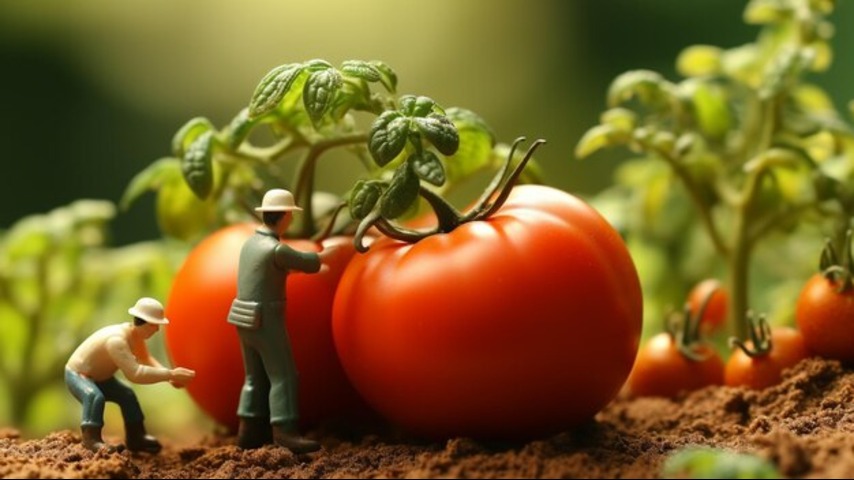I. Introduction
In the bustling world of culinary arts, where creativity and flavor reign supreme, one aspect holds unparalleled significance: food safety. As chefs and culinary professionals dazzle diners with their gastronomic creations, ensuring the safety and integrity of the food they serve is paramount. This introduction sets the stage for an exploration into the pivotal role of HACCP (Hazard Analysis and Critical Control Points) Training in elevating culinary excellence while safeguarding public health.
A. Overview of the importance of food safety in the culinary industry
The culinary industry is a vibrant tapestry of flavors, techniques, and innovations. However, woven into this tapestry is a fundamental concern: food safety. In an industry where perishable ingredients are transformed into delectable dishes, the risk of foodborne illness lurks in the shadows. Therefore, maintaining rigorous standards of food safety is not just a legal requirement but a moral obligation. From Michelin-starred restaurants to neighborhood bistros, every culinary establishment must uphold the highest standards of hygiene, sanitation, and food handling practices to protect the health and well-being of its patrons.
B. Introduction to HACCP Training
Enter HACCP, a systematic approach to identifying, evaluating, and controlling food safety hazards throughout the food production process. HACCP is not merely a set of guidelines; it’s a philosophy—a commitment to proactive risk management and continuous improvement. At its core, HACCP revolves around the concept of critical control points (CCPs), where interventions can be implemented to prevent, eliminate, or reduce hazards to acceptable levels. HACCP Training equips culinary professionals with the knowledge, skills, and tools necessary to implement and maintain a robust food safety management system based on HACCP principles.
II. Understanding HACCP Training
A. What is HACCP?
HACCP, or Hazard Analysis and Critical Control Points, is a systematic approach to identifying, evaluating, and controlling food safety hazards throughout the food production process. Developed in the 1960s by the Pillsbury Company, NASA, and the U.S. Army Natick Laboratories, HACCP was initially designed for space missions to ensure the safety of astronauts’ food. Since then, it has become the gold standard for food safety management in various industries, including the culinary sector.
At its core, HACCP focuses on preventing hazards rather than inspecting finished products for defects. It involves a proactive, preventive approach that identifies potential risks at each stage of food production, from raw material sourcing to consumption. By implementing HACCP principles, culinary professionals can mitigate risks, reduce the likelihood of foodborne illness outbreaks, and uphold the highest standards of food safety.
B. Key principles of HACCP
The key principles of HACCP are outlined in seven steps, which form the foundation of a robust food safety management system:
-
Conduct a hazard analysis: Identify potential biological, chemical, and physical hazards associated with each stage of the food production process.
-
Determine critical control points (CCPs): Identify the points in the process where control measures can be applied to prevent, eliminate, or reduce identified hazards to acceptable levels.
-
Establish critical limits: Establish criteria for each CCP to ensure that hazards are effectively controlled.
-
Establish monitoring procedures: Develop procedures to monitor CCPs and ensure that critical limits are consistently met.
-
Establish corrective actions: Define actions to be taken when monitoring indicates that a CCP is not under control, including procedures to correct deviations and prevent unsafe products from reaching consumers.
-
Establish verification procedures: Develop procedures to verify that the HACCP system is working effectively, including regular audits, reviews, and validation of critical control measures.
-
Establish record-keeping and documentation procedures: Maintain accurate records and documentation of all aspects of the HACCP system, including hazard analysis, CCPs, monitoring, corrective actions, and verification activities.
III. The Fundamentals of HACCP Training
A. Identifying hazards in food production
One of the foundational elements of HACCP Training is the identification of hazards in food production. Hazards can arise from various sources, including biological, chemical, and physical contaminants. Biological hazards may include pathogens such as bacteria, viruses, and parasites, while chemical hazards encompass toxins, allergens, and contaminants such as pesticides or cleaning agents. Physical hazards refer to foreign objects such as glass, metal, or plastic fragments.
During HACCP Training, culinary professionals learn how to conduct a thorough hazard analysis of their food production processes. This involves identifying potential hazards at each stage of production, from receiving raw ingredients to serving finished dishes. By understanding the sources and characteristics of hazards, culinary professionals can implement effective control measures to mitigate risks and ensure the safety of the food they produce.
B. Establishing critical control points (CCPs)
Critical control points (CCPs) are specific points in the food production process where control measures can be applied to prevent, eliminate, or reduce hazards to acceptable levels. During HACCP Training, culinary professionals learn how to identify CCPs based on their hazard analysis and the principles of risk assessment.
Critical limits may include temperature ranges, time limits, pH levels, or other measurable criteria. By establishing CCPs and critical limits, culinary professionals create a framework for monitoring and controlling potential hazards throughout the food production process.
C. Implementing monitoring procedures
During HACCP Training, culinary professionals learn how to develop and implement monitoring procedures tailored to their specific production processes and CCPs.
Monitoring procedures may involve visual inspections, physical measurements, or the use of equipment such as thermometers or pH meters. Culinary professionals learn to document monitoring activities accurately, recording observations and measurements at specified intervals. Regular monitoring allows culinary professionals to detect deviations from critical limits promptly and take corrective action to prevent food safety hazards from occurring.
IV. Benefits of HACCP Training for Culinary Professionals
A. Enhanced understanding of food safety principles
HACCP Training provides culinary professionals with a comprehensive understanding of food safety principles and practices. By delving into the science behind foodborne illness, hazard analysis, and critical control points (CCPs), culinary professionals gain valuable insights into the factors that can impact food safety. This enhanced understanding enables them to make informed decisions, implement effective control measures, and mitigate risks throughout the food production process.
B. Improved risk management and hazard control
By identifying potential hazards, establishing critical control points (CCPs), and implementing monitoring procedures, culinary professionals can effectively manage risks and prevent food safety incidents. HACCP Training empowers culinary professionals to proactively address hazards before they pose a threat to public health, thereby minimizing the risk of foodborne illness outbreaks and other food safety incidents.
C. Compliance with food safety regulations and standards
In today’s regulatory landscape, compliance with food safety regulations and standards is non-negotiable for culinary establishments. HACCP Training ensures that culinary professionals understand and adhere to applicable food safety regulations and standards, both at the national and international levels. By implementing a HACCP-based food safety management system, culinary professionals demonstrate their commitment to compliance and uphold the highest standards of food safety and hygiene.
V. Conclusion
In the world of gastronomy, where innovation and creativity converge, the pursuit of culinary excellence goes hand in hand with ensuring the safety and integrity of the food we serve. Through the lens of HACCP (Hazard Analysis and Critical Control Points) Training, culinary professionals embark on a transformative journey—one that elevates not only the flavors on the plate but also the standards of food safety and hygiene. Let’s recap the key insights gained from our exploration of HACCP Training:
A. Upholding the Importance of Food Safety
In the dynamic landscape of the culinary industry, food safety emerges as a cornerstone of success. From fine dining establishments to bustling kitchens, maintaining rigorous standards of hygiene and sanitation is not just a legal obligation but a moral imperative.
B. Harnessing the Power of HACCP Training
HACCP Training equips culinary professionals with the knowledge, skills, and tools necessary to navigate the complexities of food safety management. By adopting a systematic approach to identifying, evaluating, and controlling food safety hazards, culinary professionals can mitigate risks, prevent foodborne illness outbreaks, and uphold the highest standards of food safety.
C. Embracing Continuous Improvement
At its core, HACCP is more than just a set of guidelines—it’s a philosophy of continuous improvement. Through ongoing hazard analysis, critical control point (CCP) identification, and monitoring procedures, culinary professionals embrace a culture of innovation and excellence, constantly striving to enhance the safety and quality of the food they produce.





